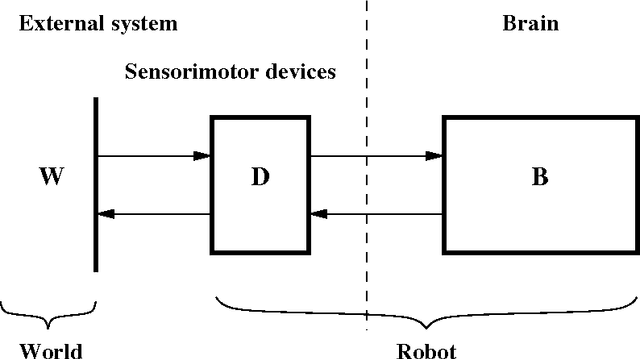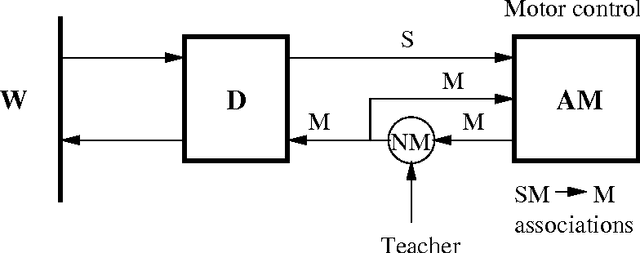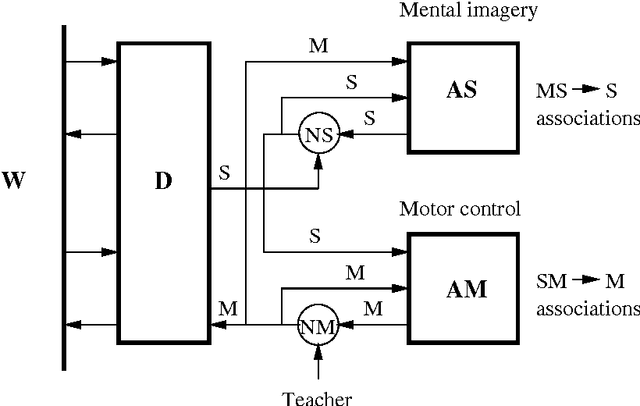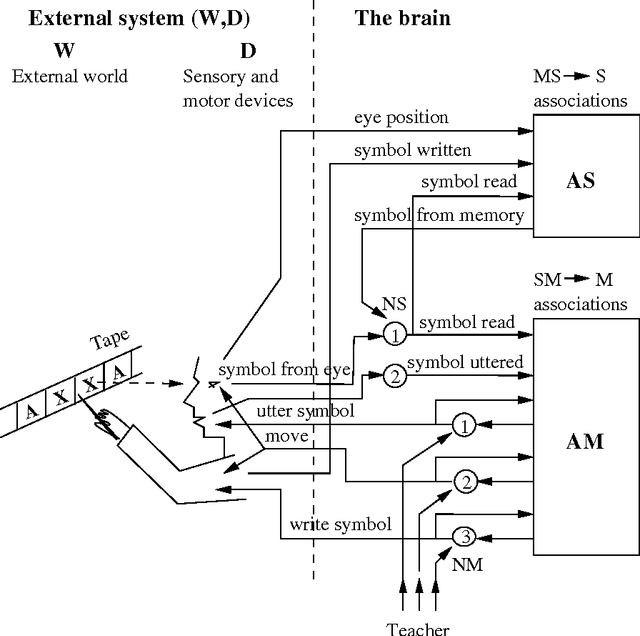Concept of E-machine: How does a "dynamical" brain learn to process "symbolic" information? Part I
Paper and Code
Mar 20, 2004



The human brain has many remarkable information processing characteristics that deeply puzzle scientists and engineers. Among the most important and the most intriguing of these characteristics are the brain's broad universality as a learning system and its mysterious ability to dynamically change (reconfigure) its behavior depending on a combinatorial number of different contexts. This paper discusses a class of hypothetically brain-like dynamically reconfigurable associative learning systems that shed light on the possible nature of these brain's properties. The systems are arranged on the general principle referred to as the concept of E-machine. The paper addresses the following questions: 1. How can "dynamical" neural networks function as universal programmable "symbolic" machines? 2. What kind of a universal programmable symbolic machine can form arbitrarily complex software in the process of programming similar to the process of biological associative learning? 3. How can a universal learning machine dynamically reconfigure its software depending on a combinatorial number of possible contexts?
 Add to Chrome
Add to Chrome Add to Firefox
Add to Firefox Add to Edge
Add to Edge